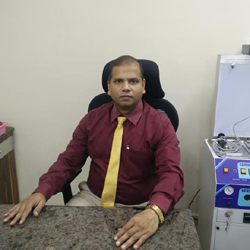Micro Laryngeal and ear Surgery
Microscopic laryngeal surgery, also known as microlaryngoscopy, is the most precise means of visualizing and operating on the vocal folds. It allows the use of the two most essential tool sets in laryngeal surgery: the operative microscope, and microlaryngeal dissection instruments. All surgery is performed through a laryngoscope, an instrument inserted via the mouth, without the need to make skin incisions.
This surgical technique is used for the evaluation and removal of various lesions of the vocal folds, including (but not limited to): cancer, cysts, papilloma, polyps, and Reinke’s edema.
Ear Surgery
Ear surgery, also known as otoplasty, can improve the shape, position or proportion of the ear. A defect in the ear structure that is present at birth or that becomes apparent with development can be corrected by otoplasty. This procedure can also treat misshapen ears caused by injury.
Otoplasty creates a more natural shape while bringing balance and proportion to the ears and face.
Endoscopic sinus surgeries for chronic sinusitis and nasal polyps: FESS (Functional endoscopic sinus surgery)
FESS is a minimally-invasive procedure performed on the sinus cavities using endoscopes to view the important structures of the nose and sinuses. The endoscope is inserted through the nose, to allow for better identification of the underlying disease, which in turn allows the surgeon to be precise, careful, and thorough with minimal damage to normal surrounding tissue. All sinuses can be viewed directly during FESS and obstructing tissue or disease can be removed as indicated. FESS allows for less tissue removal, more rapid tissue healing, and shorter recovery periods. The surgery is often performed on an outpatient basis.
Rhinoplasty for correction and restructuring, restoring functions and aesthetically enhancing the nose
Rhinoplasty, commonly referred to as a “nose job,” is surgery to change the shape of your nose by modifying the bone or cartilage. Rhinoplasty is one of the most common types of plastic surgery.
Cochlear implantation and BAHA surgeries
Cochlear implants and BAHA are implanted devices that can provide the sense of sound to someone with a severe or profound hearing loss. They can be also useful in case of a malformation of the middle ear or of the ear canal since this status wouldn’t allow wearing hearing aids.
LASER assisted surgeries done for tonsillectomy, nasal septum deviation and tympanoplasty (ear drum surgeries)
There are two major approaches to the eardrum: transcanal and postauricular. In the postauricular approach, an incision is made behind the ear. The ear is reflected forward and the eardrum can be visualized. In the transcanal approach, a speculum is placed in the outer opening of the ear canal. The eardrum is visualized by working through the speculum.
Head and neck cancer surgery
Flexible robotic surgery: Flexible robotic surgery is a minimally invasive treatment option for some head and neck cancer patients that allow the surgeon to access hard-to-reach areas of the mouth and throat using a flexible scope.
Vocal cord stripping
With this technique, a long surgical instrument is used to remove the outer layers of tissue on the vocal cords. This approach may be used to take a biopsy sample, or to treat some stage 0 cancers confined to the vocal cords. Vocal cord stripping rarely impacts speech.
Laser surgery
In laser surgery, an endoscope with a high-intensity laser on the tip is inserted down the throat. The tumor can then be vaporized or cut out using the laser.
Cordectomy
In a cordectomy, part or all of the vocal cords are removed. This approach may be used to treat glottic cancer that is very small or located only on the surface tissues. Patients who receive a cordectomy may experience changes in speech. Removing part of a vocal cord may lead to a hoarse voice.
Laryngectomy: This operation removes part or the entire larynx.
Partial laryngectomy: For small laryngeal cancers, it may be possible to remove only the portion of the voice box affected by the cancer, leaving the rest of the larynx intact. A partial laryngectomy may be used to remove the portion of the larynx above the vocal cords (supraglottic laryngectomy), or only one of the two vocal cords (hemilaryngectomy).

